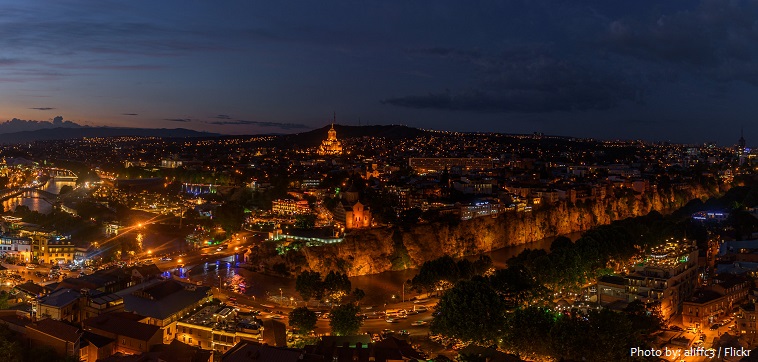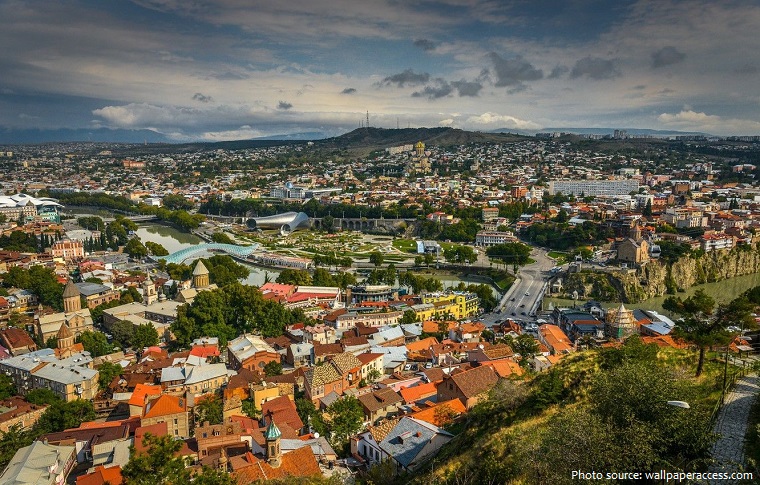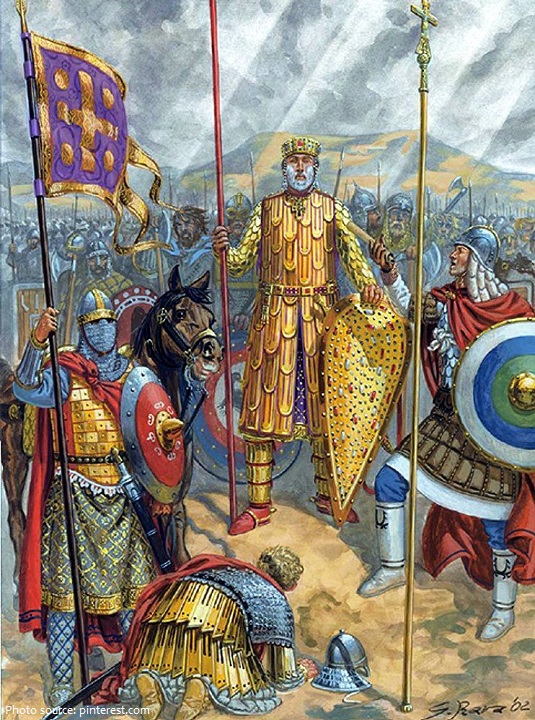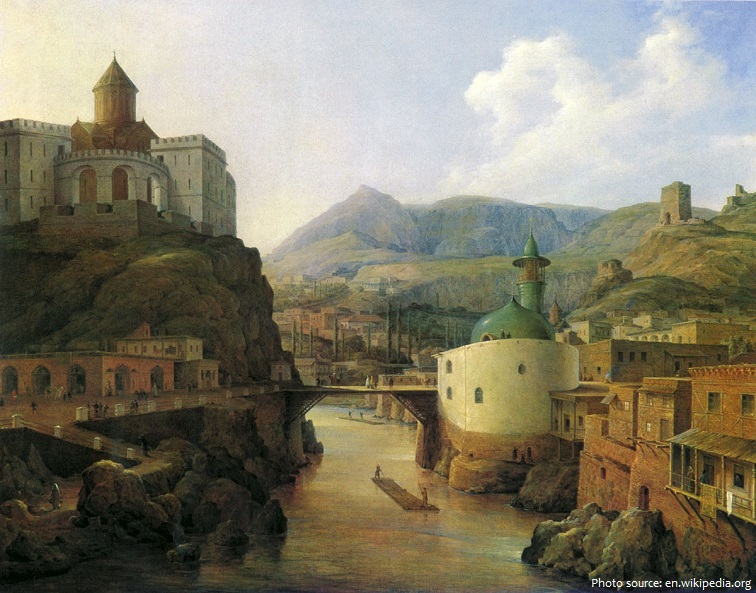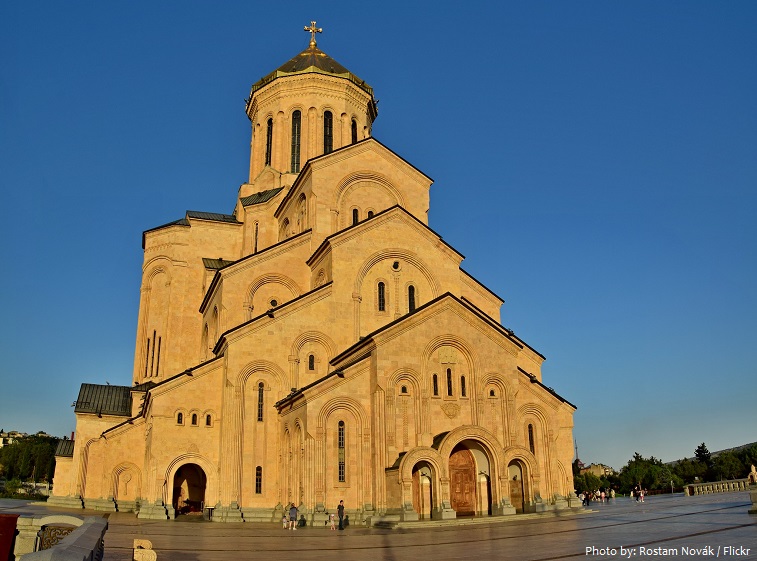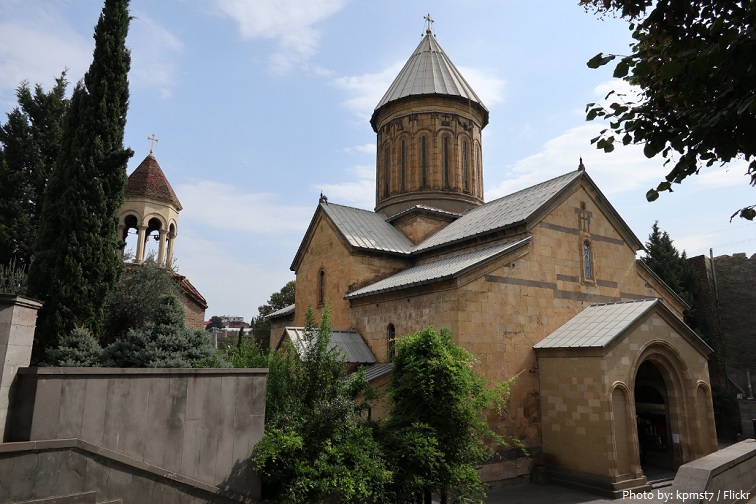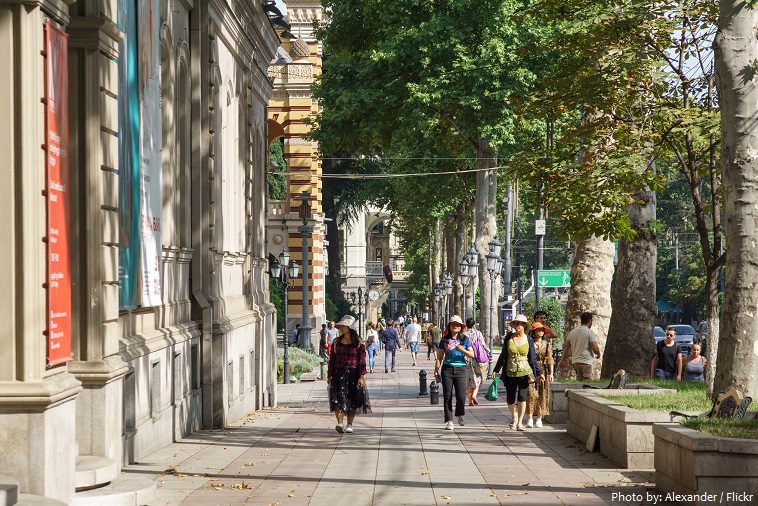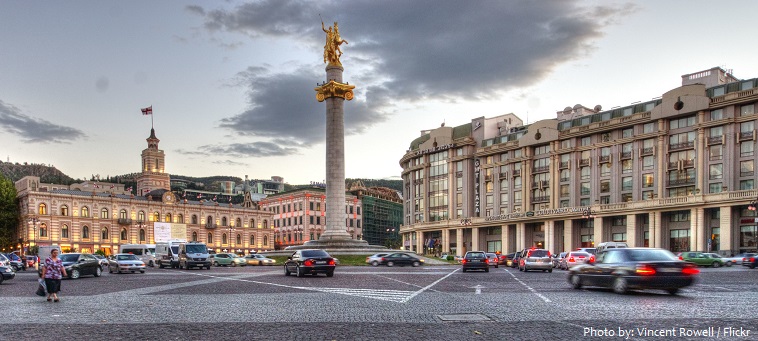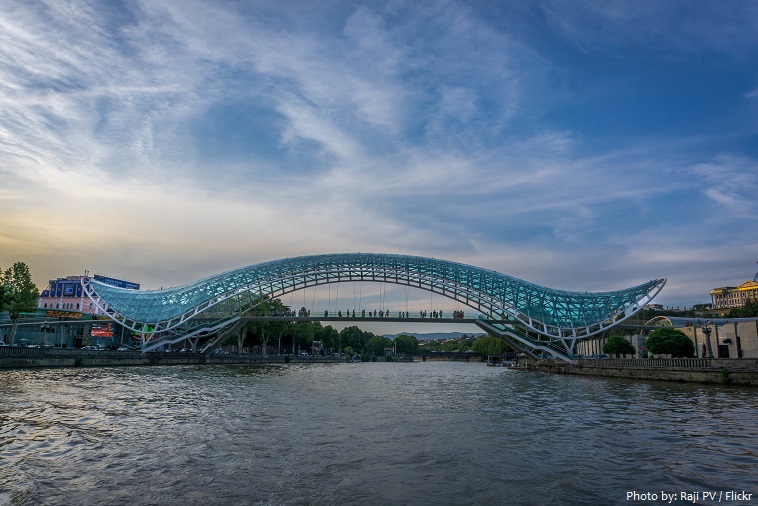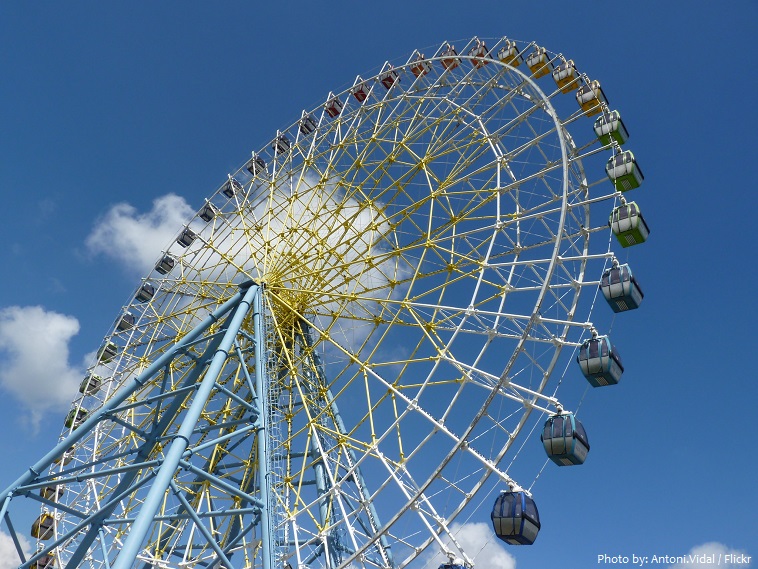Tbilisi is the capital and the largest city of Georgia.
It is situated in Eastern Georgia on both banks of the Kura River.
As of March 2020, the population of Tbilisi is about 1.2 million people.
The city covers a total area of 504 square kilometers (195 square miles).
The elevation of the city ranges from 380 to 770 metres (1,250–2,530 ft) above sea level and has the shape of an amphitheatre surrounded by mountains on three sides.
Tbilisi was founded in the 5th century AD by Vakhtang I of Iberia. He emerged as one of the most popular figures in Georgia’s history already in the Middle Ages and has been canonized by the Georgian Orthodox Church as The Holy and Right-Believing King Vakhtang.
Because of its location on the crossroads between Europe and Asia, and its proximity to the lucrative Silk Road, throughout history Tbilisi was a point of contention among various global powers.
It was often captured and sacked and knew many masters: the Persians in the 6th century, the Byzantine Empire and the Arabs in the 7th.
In 1122 David IV (the Builder) of Georgia captured Tbilisi and restored it as a capital, but in 1234 it fell to the Mongols, and in 1386 it was sacked by Timur.
The Turks captured the city on several occasions, and in 1795 it was burned to the ground by the Persians.
The Russians captured the city in 1801. Between 1801 and 1917, Tbilisi was part of the Russian Empire. The city was the seat of the Imperial Viceroy, governing both Southern and Northern Caucasus.
In 1921 it was made capital of the Georgian republic.
Tbilisi’s diverse history is reflected in its architecture, which is a mix of medieval, neoclassical, Beaux Arts, Art Nouveau, Stalinist and the Modern structures.
Narikala is an ancient fortress overlooking Tbilisi. The fortress consists of two walled sections on a steep hill between the sulphur baths and the botanical gardens of Tbilisi. On the lower court there is the recently restored St Nicholas church. Newly built in 1996–1997, it replaces the original 13th-century church that was destroyed in a fire. The new church is of “prescribed cross” type, having doors on three sides.
The Holy Trinity Cathedral of Tbilisi commonly known as Sameba is the main cathedral of the Georgian Orthodox Church located in Tbilisi. Constructed between 1995 and 2004, it is the third-tallest Eastern Orthodox cathedral in the world and one of the largest religious buildings in the world by total area. Sameba is a synthesis of traditional styles dominating the Georgian church architecture at various stages in history and has some Byzantine undertones.
The Sioni Cathedral of the Dormition is a Georgian Orthodox cathedral. Following a medieval Georgian tradition of naming churches after particular places in the Holy Land, the Sioni Cathedral bears the name of Mount Zion at Jerusalem. It is commonly known as the “Tbilisi Sioni” to distinguish it from several other churches across Georgia bearing the name Sioni.
Rustaveli Avenue is the central avenue in Tbilisi named after the medieval Georgian poet, Shota Rustaveli. The avenue is about 1.5 km (about 1 mile) in length. It is often considered the main thoroughfare of Tbilisi due to a large number of governmental, public, cultural, and business buildings that are located along or near the avenue.
Freedom Square is located in the center of Tbilisi at the eastern end of Rustaveli Avenue. The Liberty Monument depicting St George slaying the dragon, is located at the center of the square. At the north side of Freedom Square is a small open space with a fountain and a bust of Alexander Pushkin.
The Bridge of Peace is a bow-shaped pedestrian bridge, a steel and glass construction illuminated with numerous LEDs, over the Kura River in downtown Tbilisi. The bridge which stretches 150 metres (490 ft) over the Kura River was ordered by the City Hall of Tbilisi to create a contemporary design feature connecting Old Tbilisi with the new district. The official opening took place on May 6, 2010.
Mtatsminda Park is a famous landscaped park located at the top of Mount Mtatsminda overlooking the Georgian capital Tbilisi. The park has carousels, water slides, a roller-coaster, funicular, and a big Ferris Wheel at the edge of the mountain, offering a splendid view over the city.
One widely accepted variant of the Tbilisi foundation myth states that King Vakhtang I of Iberia went hunting in the heavily wooded region with a falcon. The King’s falcon allegedly caught or injured a pheasant during the hunt, after which both birds fell into a nearby hot spring and died from burns. King Vakhtang became so impressed with the hot springs that he decided to clear the forest and build a city on the location.
Until 1936, the name of the city in English and most other languages was Tiflis. On 17 August 1936, by order of the Soviet leadership, the official Russian names of various cities were changed to more closely match the local language.
Up until the beginning of the 19th century, sports such as horse-riding (polo in particular), wrestling, boxing, and marksmanship were the most popular city sports. Influence from the Russian Empire brought more Western sports and activities (billiards, fencing) to Tbilisi.
The climate in Tbilisi mostly ranges from 18 to 30 °C (64 to 86 °F).
